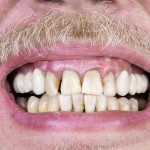
Endodontically treated teeth (ETT) are often restored using posts and single crowns. A number of factors related to the tooth or material of the crown or post may affects performance and have an impact on tooth survival.
The aim of this review was to assess the influence of the number of remaining coronal walls, the use or disuse of posts, and their type on the clinical performance of these restorations.
Methods
Searches were conducted in the Medline, Embase Cochrane library and clinicatrials.gov databases together with abstracts from the International Association of Dental Research Meetings (2004–2013). Randomised controlled trials (RCTs) and controlled clinical trials (CCTs) for ETT restored with a combination of post/crown or no post/crown in adults over the age of 18 years were considered. Two reviewers independently selected studies and abstracted data with the Cochrane risk of bias tool being used to assess the studies.
Survival or success of the restoration were the primary outcomes. All modes of failure (endodontic failure, crown/post fracture, crown dislodgements, post debonding, and root fracture) were considered absolute failures. Meta-analysis was not possible because of heterogeneity so a narrative synthesis was presented. The overall body of evidence was assessed using the Grading of Recommendations Assessment, Development, and Evaluation (GRADE) framework.
Results
9 RCTs involving a total of 1526 teeth were included
Follow up ranged from 6 months to 17 years
Average sample size = 170 teeth (range 27-360).
The overall quality of the evidence was considered to be low.
The review suggests that the number of remaining coronal walls and the use of posts are key factors for the success/ survival of these restorations.
| Remaining walls or type of post | Success/survival range % |
| No ferrule | 0 – 97 |
| Ferule | 11 – 100 |
| 1 wall | 29 – 99 |
| 2 wall | 53 – 100 |
| 2-4 wall | 67 -100 |
| High elastic modulus post | 71 – 100 |
| Low elastic modulus post | 29 – 100 |
| No post | 0 – 100 |
Conclusions
The authors concluded
The restoration of ETT should focus on the maintenance of the coronal structure. Until more studies with longer follow-up periods are available, posts with a high elastic modulus appear to present with better performance when restoring ETT with no ferrule.
Comments
This well-conducted review suggests that the number of remaining walls and the use of a post has a bearing on the survival or restorations on endodontically treated teeth. The findings are similar to a review we considered last week (Dental Elf – 17th Feb 2017) although that review focused on the restoration rather than the properties of the tooth/post and included fewer studies compared with this review. Only one study was common to both reviews. The review authors highlight that posts with high elastic modulus were followed up for longer which might have impacted on the findings so studies with longer follow up periods are needed to better compare both types of post. Greater agreement of common outcomes would also be beneficial to allow better comparisons.
Links
Primary paper
Sarkis-Onofre R, Fergusson D, Cenci MS, Moher D, Pereira-Cenci T. Performance of Post-retained Single Crowns: A Systematic Review of Related Risk Factors. J Endod. 2017 Feb;43(2):175-183. doi: 10.1016/j.joen.2016.10.025. Review. PubMed PMID: 28132706.
Other references
Original review protocol on PROSPERO
Dental Elf – 17th Feb 2017
Dental Elf – 16th Apr 2014
Dental Elf – 26th Nov 2014
